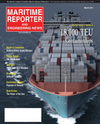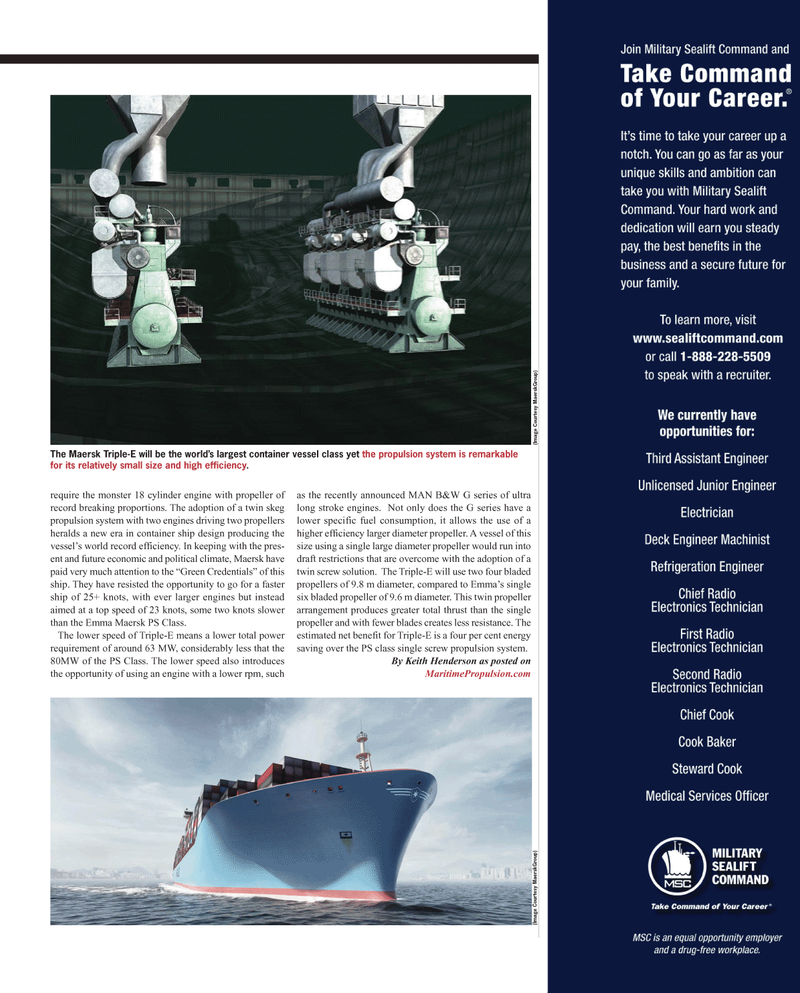
Page 9: of Maritime Reporter Magazine (March 2011)
Ship Repair & Conversion
Read this page in Pdf, Flash or Html5 edition of March 2011 Maritime Reporter Magazine
require the monster 18 cylinder engine with propeller of record breaking proportions. The adoption of a twin skeg propulsion system with two engines driving two propellers heralds a new era in container ship design producing the vessel’s world record efficiency. In keeping with the pres- ent and future economic and political climate, Maersk have paid very much attention to the “Green Credentials” of this ship. They have resisted the opportunity to go for a faster ship of 25+ knots, with ever larger engines but instead aimed at a top speed of 23 knots, some two knots slower than the Emma Maersk PS Class.
The lower speed of Triple-E means a lower total power requirement of around 63 MW, considerably less that the 80MW of the PS Class. The lower speed also introduces the opportunity of using an engine with a lower rpm, such as the recently announced MAN B&W G series of ultra long stroke engines. Not only does the G series have a lower specific fuel consumption, it allows the use of a higher efficiency larger diameter propeller. A vessel of this size using a single large diameter propeller would run into draft restrictions that are overcome with the adoption of a twin screw solution. The Triple-E will use two four bladed propellers of 9.8 m diameter, compared to Emma’s single six bladed propeller of 9.6 m diameter. This twin propeller arrangement produces greater total thrust than the single propeller and with fewer blades creates less resistance. The estimated net benefit for Triple-E is a four per cent energy saving over the PS class single screw propulsion system.
By Keith Henderson as posted on
MaritimePropulsion.com
The Maersk Triple-E will be the world’s largest container vessel class yet the propulsion system is remarkable for its relatively small size and high efficiency. (Image Cour tesy MaerskGr oup) (Image Cour tesy MaerskGr oup)

 8
8

 10
10
